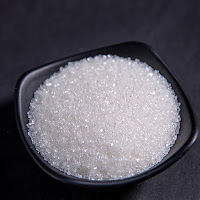Almost all people are not resistant to sugar. What's even more terrifying is that some studies say that sugar is as addictive as cocaine.
A study by the Queensland University of Technology confirms that consuming large amounts of sugar can raise dopamine levels like cocaine, and once dopamine levels drop, you will want to consume sugar again to stimulate dopamine production.
Does eating sugar makes you look old?
Over the past few decades, food companies have realized that if they add sugar to their products, it will be more likely to entice you to buy again.
Even ketchup, oatmeal, yogurt, salads, and cereals contain a lot of sugar—especially in low-fat foods, where sugar can make up for the lack of flavor.
One of the main reasons why fast food is unhealthy is that it contains a lot of sugar.
That small bottle of Coca-Cola has 9.5 tablespoons of sugar, and the average person should not consume more than 7 tablespoons in a day.
Of course, if you only drink this one bottle throughout the day, it's not a big deal.
But you're likely to eat breakfast, lunch, and dinner, each containing more than 7 tablespoons of sugar, and in between, you may also have a snack. That's why the average American consumes more than three times the allowable amount of sugar per day.
Let’s now look on the effects of sugar
The effects of eating sugar on the skin
Experts say consuming too much sugar can trigger inflammation.
"Sugar causes inflammation within the body," said Dr. Saya Obayan, MD, a board-certified clinical dermatologist. She explained to Insider that consuming or intaking large amounts of sugar sends it straight to the gut (which is probably bad), where it’s processed before entering the bloodstream—potentially triggering inflammation.
Clinical dermatologist Saya Obayan, MD, says, "Sugar triggers inflammation in the body." She told Insider that when the body ingests a lot of sugar, it goes directly into the intestines, where it is digested and enters the bloodstream, causing inflammation.
Inflammation is the body's defense response to stimuli, and while there are benign reactions, sugar-induced inflammation can be inflicted.
When eating some foods with a high glycemic index, the inflammation triggered can make some skin problems worse. High-glycemic foods, such as white bread, soda drinks, salad dressings, candy, and other baked goods that contain refined sugars and processed starches, can cause insulin spikes.
The most direct effect of inflammation on the skin is reflected in the most "hated" acne.
According to Dr. Donna Hart who is a board-certified dermatologist at Westlake Dermatology and Cosmetic Surgery, indulging in sugar makes your insulin levels jump. This boost then fuels inflammation in your skin, which is a major trigger for acne. As a result, you might notice more frequent breakouts and flare-ups popping up on your face.
Not only that, but also too much sugar can also aggravate other skin conditions such as rosacea, eczema, and psoriasis. For that reason, if you struggle with any inflammation-related problems, it’s a good idea to cut back on sugary foods
Even if there is a problem with the skin, sugar can accelerate aging.
If your biggest concern is skin aging, avoiding too much sugar is definitely the best option. This is because a diet high in sugar may accelerate skin aging. Dr. Hart says high-glycemic foods can also accelerate the breakdown of collagen fibers during glycation, which can lead to aging.
How to quit sugar?
First Read food labels
Look at the food description.
You'll quickly realize just how much sugar is added to foods when you look for it on ingredients lists.
Diane Sanfilippo, a certified nutrition counselor, says:
"Some foods don't taste very sweet, such as ketchup, biscuits, dressings, salad dressings, etc., but they may have a lot of added sugar."
Basically, ingredients are ranked by quantity, so if sugar shows up near the top of the list, that’s a clear warning sign to avoid or reduce in amount of that product.
Buy unsweetened food
One strategy is to buy foods that say, "no added sugar" or "no sugar."
In supermarkets and many other groceries stores you can find sugar-free alternatives to many common foods, such as soy milk, applesauce, oatmeal, etc.
Protein and fat
Mix protein and fat wisely.
Unhealthy carbohydrates with a lot of added sugar can cause a sharp spike in blood sugar, which can also cause blood sugar to drop rapidly, making you feel hungry for a while.
To reduce these ups and downs, combine them with protein (e.g., beef, chicken breast, fish, shrimp), healthy fats (e.g., avocados, nuts), and vegetable fiber, which will slow down the release of blood sugar in your body and keep you feeling fuller for longer.

